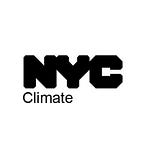About Red Hook
Red Hook is a peninsula of approximately 14,000 people surrounded by the Gowanus Bay, Erie Basin, and the Buttermilk Channel. A true mixed-use neighborhood, Red Hook contains residential and large- and small-scale commercial and industrial uses. The neighborhood was once one of the most active freight ports in the world. Red Hook contains a wide range of industrial businesses, including a growing group of artisanal food and drink manufacturers. Van Brunt Street, the primary commercial corridor, is lined by restaurants and small businesses, as is Columbia Street, a burgeoning sub-neighborhood along the waterfront, just north of Red Hook. The majority of residents live in NYCHA’s Red Hook Houses, the largest public housing development in Brooklyn.
Red Hook remained largely rural and undeveloped from the mid-17th century through the mid-19th century, when the construction of sheltered ports at Atlantic Basin and Erie Basin on Red Hook’s waterfront turned the area into one of the busiest shipping centers in the United States. From the beginning of the Civil War to the 1940s, ships from all over the world docked at Red Hook to load and unload cargo and for repairs and maintenance. This, in turn, attracted generations of immigrants and others to the area. To house the families of area dockworkers, in 1938, NYCHA’s Red Hook Houses opened — among the first public housing complexes in the city and a model that would be replicated widely elsewhere.
In the second half of the 20th century, Red Hook’s fortunes began to change. With the introduction of container shipping, many of Red Hook’s dock facilities suddenly became obsolete. Rapidly, businesses — and the jobs they created — left. With the decline of the maritime industry, the local economy weakened, a trend that was exacerbated by the construction of the Gowanus Expressway in 1946, which cut the neighborhood off from the rest of Brooklyn. At the same time, the area saw crime rates soar.
Over the past two decades, however, Red Hook has begun to change. Several factors, including community and government initiatives such as the Red Hook Community Justice Center, helped to contribute to the area’s renaissance. As crime plummeted and community-based organizations increased their presence in the neighborhood, public and private investment followed. Businesses, including larger retailers, opened on and near Van Brunt Street, bringing new visitors and economic activity to the area.
However, transportation options to and through Red Hook remain limited. Red Hook lacks a subway stop, with the closest one requiring crossing heavily trafficked Hamilton Avenue. This is a particular issue for area residents who face long commutes to work. In many cases, schools, healthcare, and other key services are also not easily accessible. The limited availability of public transit also has affected a number of the local businesses that have opened in recent years, making it difficult for them to attract a large customer base.
Transit access is not the only challenge Red Hook faces. The area is also vulnerable to weather-related events. This is because much of the neighborhood rests on low-lying former marshland, leaving it flood-prone. As demonstrated during Sandy, such flooding can damage the mechanical systems of buildings, the possessions of those living in ground-floor residential units, the inventory of ground-floor retailers, and the heavy equipment and products of industrial businesses.
Despite these challenges, strong local relationships and a diverse network of community-based organizations form a strong foundation for social resiliency in the neighborhood, and were able to mobilize quickly and provide meaningful, critical support for the residents and businesses after the peninsula was hit hard by Hurricane Sandy.
Climate Risks in Red Hook
NYC Observed Climate Trends (1900–2013)
Sea Level Rise: Sea level has risen 1.2 inches per decade for a total of 1.1 feet in total, nearly twice the global average
Latest Climate Projections: Sea Level Rise
Sea level is expected to rise:
- 11 to 21 inches** by the 2050s
- 18 to 39 inches** by the 2080s, and
- 6 feet by 2100***
Projected sea level changes alone would increase the frequency and intensity of coastal flooding (absent any change in storms themselves).
Red Hook’s Flood Risk Map
*Source: NYC Panel on Climate Change, 2015
** Middle range (25th to 75th percentile) of model-based projections
*** High estimate of model-based projections
